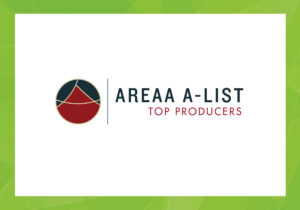Success for real estate professionals in the social environment requires a balance between their social goals and the time and other resources available for reaching them. However, starting with a realistic plan can set a course for striking this balance.
Social Media for Every Type of User
When performed and managed correctly, social media is effective and accessible to all real estate professionals, though the perception that its full potential can be realized quickly is simply misleading.
To assist real estate agents in understanding the social media results they can expect from a particular level of investment, Lumentus Social analyzed more than 100 real estate professionals’ social media pages of independent and franchised brokerages in various markets. Following our analysis, we identified four types of users, each based on patterns of activity, engagement, and response level.
- Power User – Active every day, both posting and engaging with others.
- Regular User – Posting regularly, though with limited proactive engagement with others.
- Sometimes User – Posting irregularly and only engaging with those who directly contact them.
- New to Social – Have built pages, though they are mostly static users and can actively view others’ social activity while seldomly engaging with them.
Advertising
There are a number of cost-effective social media advertising options and each can drive significant growth in your followers, content reach, and engagement. You can determine your comfort level with each option by promoting one post at a time or creating a bold, long-term campaign. You can also customize your choice for each platform being used.
Topline Tips
- Boost a post and increase its reach and visibility. It can be accomplished in a variety of ways depending on your platform(s), with each having an advertising manager section for assistance.
- Broaden your reach beyond your own connections, drive website traffic and increase opportunities for interactions by building social ads, which vary by platform.
- Create multiple ads for each advertising concept to test different images and copy, and ultimately decide which concept(s) work best. Run both ads with a small budget for one week and use the remainder of the budget for the stronger-performing ad.
Below is a summary of the most popular advertising options for each social platform:* |
|
Offers the most robust options for ad types and targeting of all of the social networks.
|
|
Uses the Facebook audience targeting capabilities, but currently offers fewer ad options than Facebook.
|
|
Twitter offers robust ad options and targeting capabilities, like Facebook, but the data may be less accurate and ad performance is typically seen as less effective.
|
|
While multiple ad types are available, data suggests Pinterest is a strong platform for driving people to your website.
|
|
While multiple ad types are available, Lumentus Social data suggests the most effective type of advertising on LinkedIn is engagement ads.
|
|
*This information is based on social advertising options offered on these platforms on the date of this guide’s publication.
The below chart combines Lumentus Social and BHGRE’s advertising results on Pinterest and Instagram ads manager from January 1, 2016 to September 30, 2016, with industry data from the Financial Times, to demonstrate the cost-effectiveness of advertising on different platforms. As you can see, Facebook is the most cost-effective; we generally recommend that brokers and agents begin their advertising experience with Facebook.

| User Type | Amount | Types of Social Ads to Use | Considerations for Growth |
| Power User | $500+ / month | Boost post ads, page growth or like ads, and web-traffic ads. | Select a variety of ads for different audiences, test each ad using a portion of your budget and allocate the balance of your budget to the ad that performs best. |
| Regular User | $200+ / month | Boost post ads and like ads. | Consider both the ad creative (visual look) and audience targeting (demographics you choose to narrow down your reach). For example, to experiment with audience targeting, you can create one ad set to run to an email list of existing clients and run a different ad for people who do not know you. To experiment with ad creative choices, try using two varying images for two different ads to see if the results differ.
You should consider spending at least $50 on each ad campaign. |
| Sometimes User | $35+ / month | Boost post ads. | Create a social media business page, which is required for social advertising on Facebook. Advertising is also available on Twitter and Instagram, though it is recommended that Sometimes Users begin with Facebook.
For this level of investment, we recommend boosting your top-performing social posts at $5-$10 per post. |
| New User | N/A | N/A | New users should avoid spending money on social ads. We recommend setting a goal to post content consistently for at least two months before beginning social advertising.
It is also important to note that advertising is not available on personal Facebook pages. You must create a business page to advertise on Facebook. However, this is not true of other social platforms. |
To find the full guidelines for taking advantage of the social media resources at your fingertips, download The Real Estate Agent’s Guide to Social Media whitepaper here.








